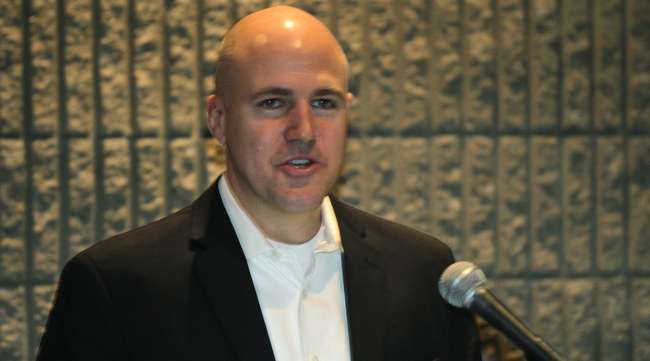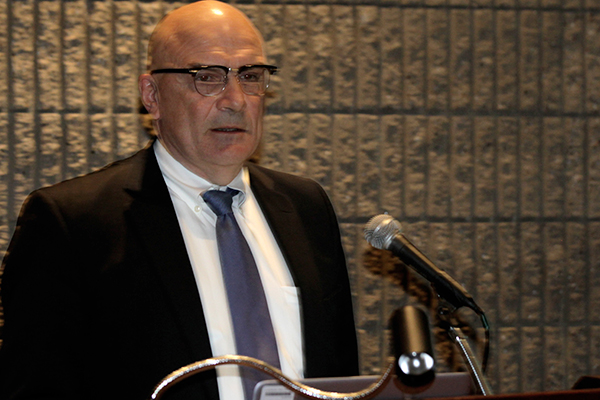Senior Reporter
Eaton Sees Future of AMTs, Electrification

ATLANTA — Eaton Corp. said it will meet future emissions standards and improve productivity in commercial vehicles with electrified components and advances in automated transmissions.
Separately, the company announced a new business segment, operational immediately, called eMobility. It combines business, products and customer relationships from its electrical segment with those in the vehicle group, and is aimed at what Eaton forecasts is a $33 billion market. Eaton’s electrical businesses generate about 60% of its revenue. The vehicle unit generates about 15%.
Eaton discussed its strategy at the annual meeting of the Technology & Maintenance Council of American Trucking Associations.
A key element of Eaton’s plan involves the Eaton Cummins Automated Transmission Technologies Joint Venture, formed in 2017 with independent engine maker Cummins Inc.
“It’s all about investment. And we have really doubled down in terms of investments for new technologies and new products,” said Scott Davis, general manager of the joint venture.
That includes expanding on its 12-speed Endurant automated transmission — the joint venture’s first product — which entered production in October 2017.
“We are working on advanced shifting technologies, and beyond the transmission and into the entire powertrain to make sure it shifts faster, smoother and more consistent,” he said.
Eaton is working on neutral-coasting and smart-coasting capabilities, and will introduce “more novel ways” to execute those fuel-efficient features, he said. These will contribute to meeting tighter federal emissions regulations for greenhouse gases coming in 2021, 2024 and 2027, he added.
After a “very aggressive ramp up,” the joint venture has sold 3,500 Endurant units, which have accumulated more than 20 million miles on customers’ vehicles, Davis said.
At the formation of the joint venture, engine maker Cummins Inc. paid Eaton about $600 million for its stake. Eaton contributed the designs for its next-generation automated heavy-duty transmission, as well as its current Procision medium-duty transmission and certain assembly assets.
Looking ahead, the trucks of the future are going to require a lot of intelligence and very efficient operation, which will require a lot of electrification, said Larry Bennett, director of engineering, technology and innovation at Eaton.

Bennett by John Sommers II for Transport Topics
“There will be multiple voltage levels on board, with the need for smart power management and distribution,” Bennett said.
In 10 years, there will be electric valve train control compared with mechanical control now, and there will be improvements in exhaust gas recirculation for emissions control, he added.
It is expected federal regulations in 2024 will further restrict nitrogen oxide emission levels, possibly by 90% to 0.02 gram per brake horsepower-hour compared with the current 0.20 gram standard.
One of the options Eaton is exploring to meet a tighter NOx standard is an electrified exhaust gas recirculation pump. It is “kind of based on our supercharger technology, but with significant modifications to allow it to run in the exhaust system,” Bennett said.
“Essentially, to reduce NOx, you really want to provide EGR flow that is independent of engine [revolutions per minute] and is more dependent on how loaded the engine is at that particular moment, which isn’t the same as engine speed,” he said.
Eaton has developed a pump that will deliver the right “mass flow” of EGR, regardless of engine conditions, by controlling the speed of the pump’s electric motor — “potentially bringing [NOx levels] down to the 2024 levels coming into play.”
Electric powertrains already are appearing in buses and the lighter medium-duty vehicles destined for last-mile deliveries, he said.
Predictive capabilities using connected technologies will increase so the vehicle can, for instance, look down the road then change how the engine performs to improve fuel economy, taking some of the decision-making out of the driver’s hands.
Eaton’s IntelliConnect fault-code analysis system for its automated transmissions is in 4,000 trucks and can provide action plans, guidance and next steps.
Tying all that together gets the industry to autonomous vehicles, Bennett said.
#TMC18 is underway! pic.twitter.com/fnIFyY2UNn — American Trucking (@TRUCKINGdotORG) March 5, 2018


